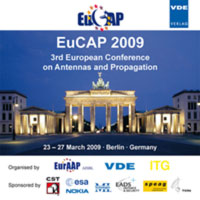Modelling of MIMO Vehicle-to-Vehicle Fading Channels in T-Junction Scattering Environments
Konferenz: EuCAP 2009 - 3rd European Conference on Antennas and Propagation
23.03.2009 - 27.03.2009 in Berlin, Germany
Tagungsband: EuCAP 2009
Seiten: 5Sprache: EnglischTyp: PDF
Persönliche VDE-Mitglieder erhalten auf diesen Artikel 10% Rabatt
Autoren:
Zhiyi, He; Wei, Chen; Wei, Zhou (School of Information Engineering, WuHan University of Technology, WuHan, 430070, HuBei, P.R. China)
Pätzold, Matthias; Chelli, Ali (Faculty of Science and Engineering, University of Agder, P.O. Box 509, 4898 Grimstad, Norway)
Inhalt:
In this paper, a new wideband multiple-input multiple-output (MIMO) fading channel model for vehicle-to-vehicle (V2V) communications is proposed. The MIMO V2V channel model, called for brevity T-model, captures the propagation effects that occur if vehicles move towards a junction with a side road and corner buildings. The starting point for the derivation of the T-model is a new geometric T-junction scattering model, where both single- and double-bounce scattering mechanisms are assumed. Our geometry-based channel model takes into account the exact relationship between the angle-of-arrival (AOA) and the angle-of-departure (AOD). The statistical properties of the T-model are studied under the assumption of non-isotropic scattering. An analytical solution is provided for the space-time-frequency cross-correlation function (STF-CCF) from which several other important characteristic quantities like the temporal autocorrelation function (ACF) can directly be obtained. The achieved theoretical results are illustrated for a typical T-junction propagation scenario. This research work provides designers of MIMO V2V communication systems an important tool in form of a wideband spatial channel model enabling the performance analysis of new high data rate transmission schemes under propagation conditions occurring at T-junctions.


